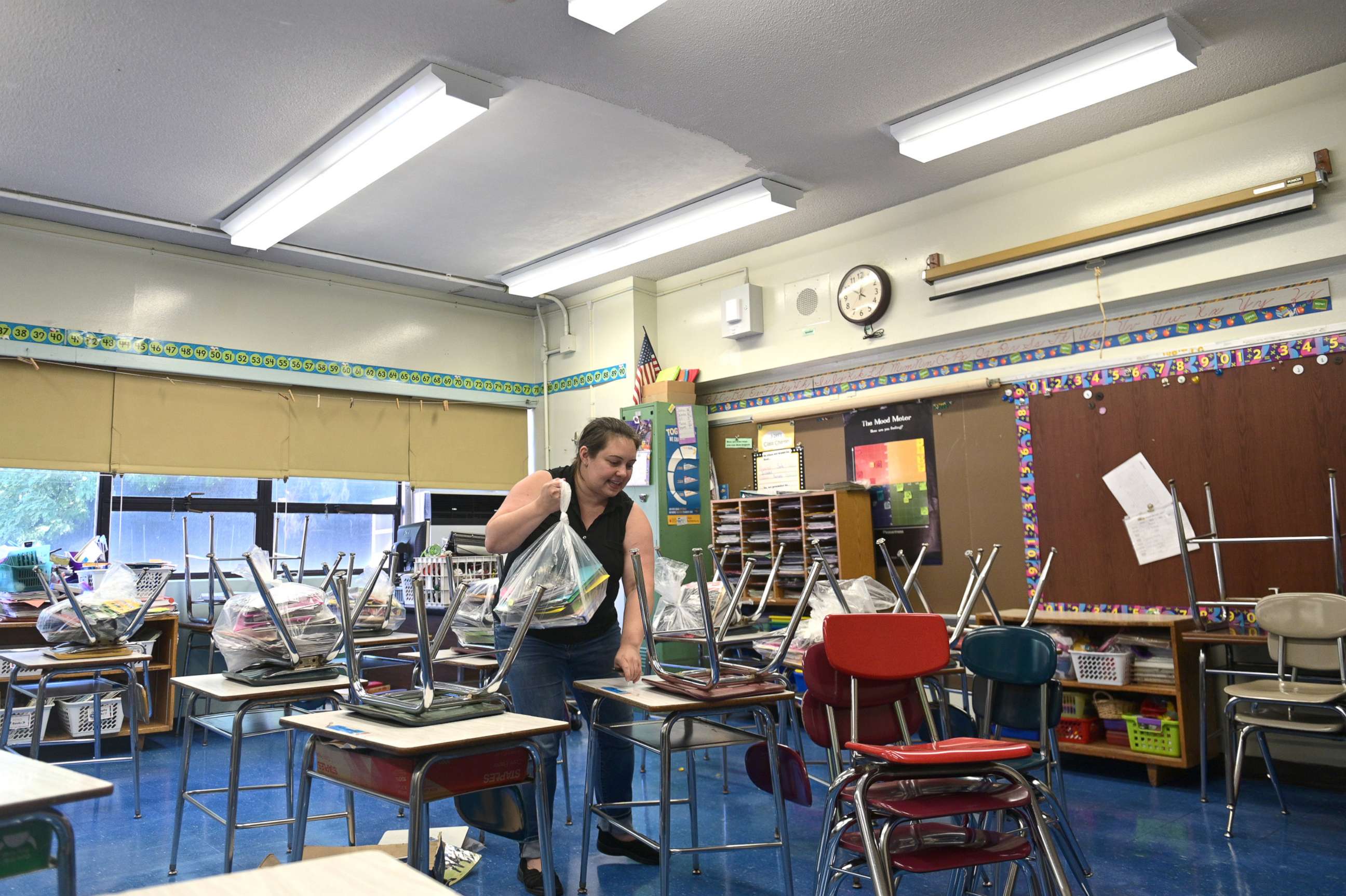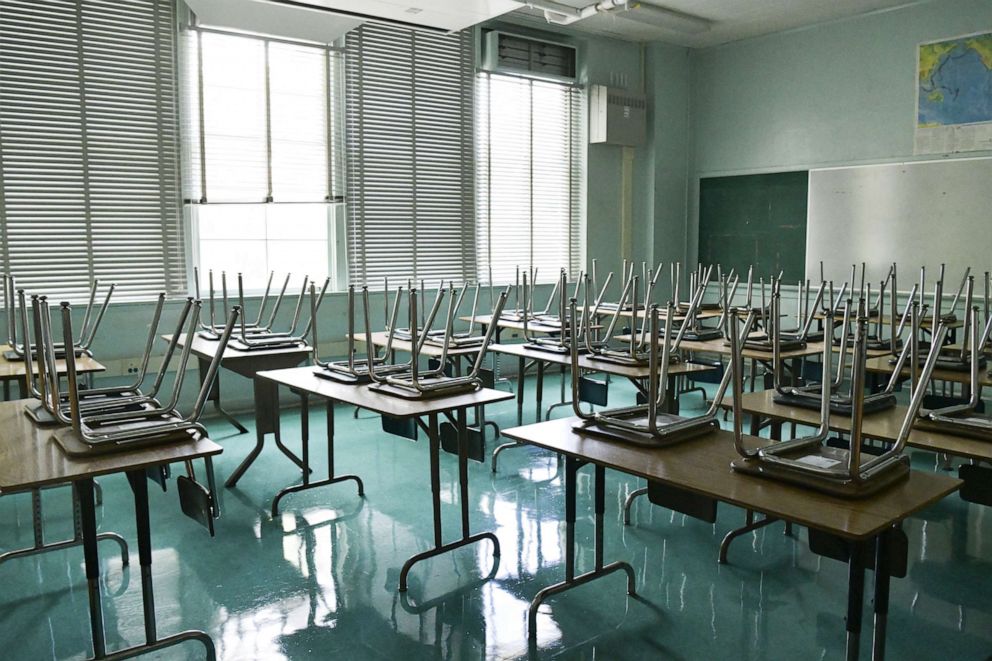Between COVID-19 and shootings, a question emerges: What to do with classroom doors?
Recommended COVID-19 protocols may be at odds with active shooter policies.
As schools reopen with in-person learning, there are scores of questions about what that will look like. One in particular educators have been anticipating: Between COVID-19 and concerns about school shootings, what do we do with classroom doors?
Recommended protocols for the coronavirus may be at odds with active shooters policies. Where the former advises opening doors to increase ventilation, the latter typically recommends keeping them closed and locked to protect students from potential intruders.
A teacher posed this question on Twitter recently, prompting scores of educators to share that it's one they've also been wrestling with. One described it as "the rock and hard place we are caught between." Another grimly calculated the risk assessment and figured that "the open door will likely save more lives."
"I never considered which way I, or my staff/kids, would be less likely to die as part of my leadership philosophy but here we are," one said.
"There are some definite polarities going on with COVID-19 and school safety," National School Safety and Security Services President Ken Trump, who is not related to President Donald Trump, told ABC News.
School safety during COVID-19
In its reopening guidelines, the American Academy of Pediatrics (AAP) recommends using outdoor spaces whenever possible, noting that outdoor transmission of COVID-19 is lower than indoor transmission. The Centers for Disease Control and Prevention advises increasing outdoor air ventilation where possible, such as by opening windows and doors.
Medical experts ABC News spoke with agreed that if you can have students be physically outside, that would be ideal. Absent that, opening windows and doors can help increase air change.
"The more that we can make any space we are in mimic the outdoors is going to decrease the risk of transmission," Dr. Amesh Adalja, a senior scholar at Johns Hopkins Center for Health Security, told ABC News. "It doesn't require you to do anything other than keep the door open or open the windows."
Ventilation is just one of several mitigation measures in classrooms, along with social distancing, wearing face coverings and frequent cleaning of high-touch surfaces, Dr. Nathaniel Beers, a member of the AAP Council on School Health who helped develop the AAP's guidance on schools reopening, told ABC News. In cases where windows can't open or are nonexistent, propping open doors, along with improving HVAC systems, are key, he said.
"You want to try and make sure that you're optimizing the air exchange so that it's happening more frequently in a classroom," he said.

These COVID-19 guidelines are the latest protocols in the evolution of classroom safety, according to JP Guilbault, CEO of Navigate360, which owns and operates ALICE, an emergency preparedness, threat assessment and active-shooter training and response organization.
"You have progressing and emerging responses that happen to society," Guilbault told ABC News. "We've gone from fire to mass shooting to now, we're faced within our schools, managing health and managing contagious disease."
Rethinking safety procedures
Since the Columbine High School mass shooting in 1999, schools have reassessed how people enter buildings, and active shooter drills have become common. With subsequent school shootings, authorities have argued strongly that teachers should be required to teach with their doors closed, Ken Trump said.
Today, most states require that schools have a safety plan and conduct safety or security drills, the Education Commission of the States has found. Depending on where you teach, safety plans may require classroom doors to be closed. Policies may also require that windows, especially for those on the first floor, be locked.
Before COVID-19, keeping doors closed was already a "constant security battle in schools," Trump said, particularly in schools that don't have air conditioning.
But Trump said he personally was never a "staunch advocate" for having them always shut. "I think we should train teachers on how to quickly close the doors and lock down," he said.

John, a teacher in the Phoenix metro area, told ABC News he normally would keep his door propped open with the handle locked. He sees that as a potential solution for other teachers as schools respond to the coronavirus.
"Should any distress be called, it is quickly just kicked out, and the door is closed," he said. "I have to sweep the hall anyway. You can close the door, and at the same time do a safety sweep of the hallway."
The gamut of school safety drills, from lockdown and active shooter to fire and evacuation, may also need to be adjusted amid social distancing protocols. Guilbault said he is starting to see some school districts update their policies in light of the coronavirus.
"We're seeing things where the normal drill protocol is going to happen, but it's going to happen more frequently with smaller groups," Guilbault said. Schools may also have teachers walk through and visualize the response.
"The need for drills, the need for refreshment and the need to know is still paramount in the school in the event of an emergency," he said.
'Balancing act'
This new school environment is not cut and dry, school safety experts say, and will vary based on many factors, from the layout of the classroom to the rate of community spread.
"You have to find the balancing act -- what is reasonable," Ken Trump said.
"We're understanding that what schools are challenged by today is the absolute need to maintain safety," Guilbault said. "While COVID is creating a unique dynamic, there is still risk across many spectrums of emergencies that can occur."
For Dr. Adalja, this moment demands that schools be creative in how they approach the classroom to limit COVID-19 risk.
"If you're just trying to go back to normal, you're going to see exposures and quarantines and all the stuff that we're hearing about if you're not prepared," he said. "I think you have to be willing to try and change the way you do things in order to make school feasible in this era."



